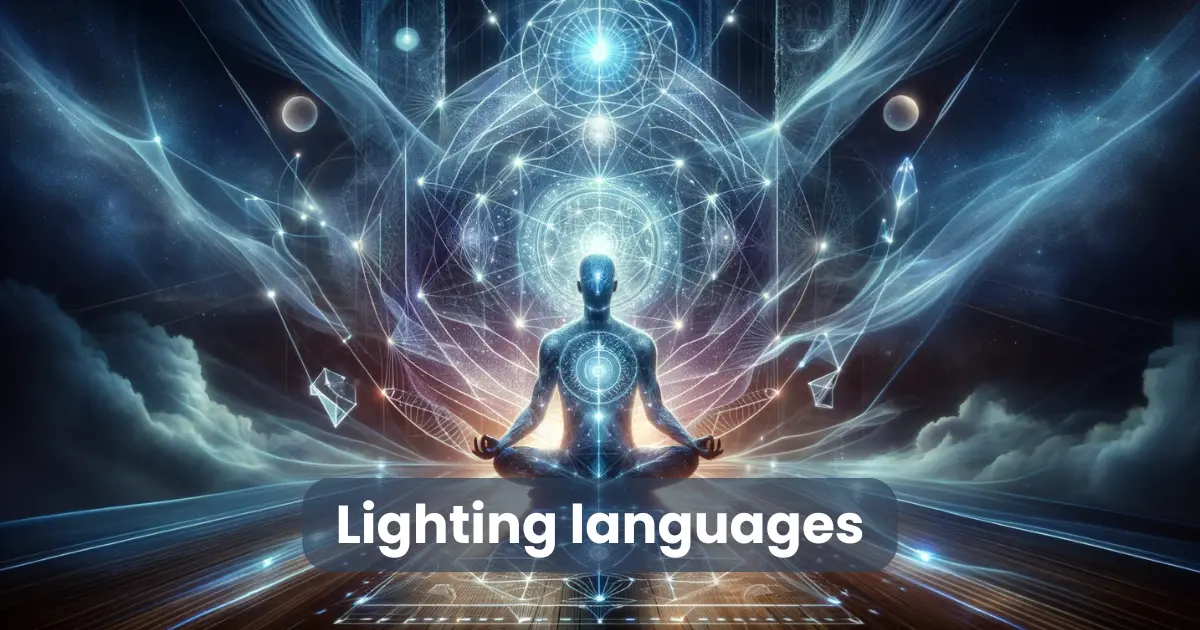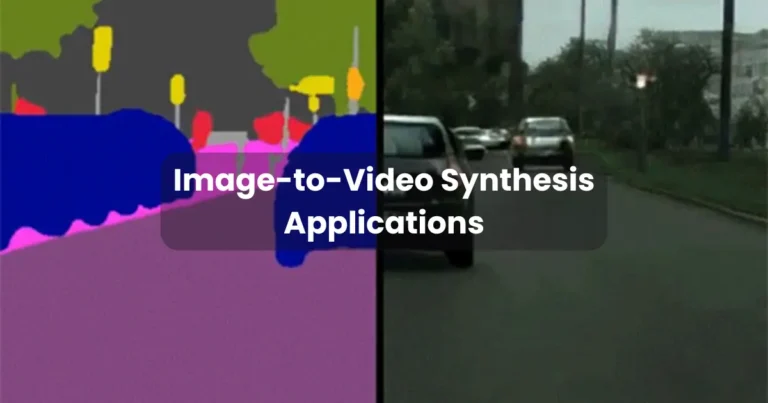Lighting languages | Types of Lighting Languages

Contents
- 1 The Science Behind Lighting Languages
- 2 Types of Lighting Languages
- 3 The Role of Lighting Languages in Different Industries
- 4 How Lighting Languages Influence Human Perception
- 5 Innovations in Lighting Languages
- 6 Choosing the Right Lighting Language for Your Project
- 6.1 1. Understand the Purpose of the Space
- 6.2 2. Consider the Emotional Impact
- 6.3 3. Acknowledge the Architectural Features
- 6.4 4. Account for Sustainability and Energy Efficiency
- 6.5 5. Match the Lighting with the Design Aesthetic
- 6.6 6. Explore Emerging Lighting Technologies
- 6.7 7. Balance Functional and Aesthetic Needs
- 6.8 Conclusion
Lighting languages play a crucial role in shaping how people perceive spaces, objects, and emotions. Whether in cinematography, architecture, or stage design, the strategic use of light transforms ordinary scenes into visually compelling compositions. By understanding lighting languages, artists and designers can manipulate brightness, shadows, and color to enhance mood, depth, and storytelling.
The concept of lighting languages is deeply rooted in both science and art. Different types of light—natural, artificial, ambient, accent, and task lighting—affect how people interact with their surroundings. Additionally, factors such as color temperature, contrast, and intensity determine the emotional impact of a scene. Mastering lighting languages enables professionals to create immersive environments in industries such as film, theater, photography, gaming, and interior design.
From setting dramatic tones in movies to enhancing comfort in homes, lighting languages influence everyday experiences in subtle yet powerful ways.
The Science Behind Lighting Languages
Lighting languages are deeply connected to the principles of physics and human perception. Light behaves both as a wave and a particle, influencing how it interacts with objects, surfaces, and the human eye. Understanding these scientific foundations allows designers, filmmakers, and architects to manipulate light effectively.
Light as an Electromagnetic Wave
Light exists as a form of electromagnetic radiation, with different wavelengths producing various colors. The visible spectrum, ranging from violet to red, determines how colors are perceived. Shorter wavelengths, such as blue and violet, create cool tones, while longer wavelengths, like red and orange, produce warm tones.
Color Temperature and Its Impact
Measured in Kelvin (K), color temperature is a crucial aspect of lighting languages. Lower temperatures (2,000K–3,000K) emit warm, yellowish light, often associated with cozy and intimate settings. Higher temperatures (5,000K–6,500K) produce cooler, bluish light, commonly used in daylight simulations or office environments. The choice of color temperature significantly influences mood and perception.
Reflection, Absorption, and Diffusion
Light interacts with surfaces in three primary ways:
- Reflection: Smooth surfaces, like mirrors or polished floors, reflect light directly, creating sharp highlights and strong contrasts.
- Absorption: Darker materials absorb more light, reducing brightness and enhancing shadows.
- Diffusion: Translucent surfaces scatter light, creating soft illumination that minimizes harsh shadows.
The Role of Shadows and Contrast
Shadows and contrast contribute to depth, realism, and drama in lighting languages. High contrast lighting, such as chiaroscuro, enhances dramatic intensity in film and photography. Low contrast lighting, on the other hand, creates softer, more natural looks, often used in portrait photography and interior design.
Human Eye Perception and Adaptation
The human eye continuously adapts to different lighting conditions. The retina contains rods and cones, which help perceive brightness and color. Rods function in low-light conditions, while cones detect color in well-lit environments. This adaptability plays a key role in how lighting languages influence emotions, focus, and visual clarity.
Types of Lighting Languages
Lighting languages are categorized based on their source, function, and effect on the environment. Each type of lighting serves a distinct purpose and can dramatically influence the mood, aesthetics, and usability of a space or scene. Below are the primary types of lighting languages, each with its unique characteristics and applications.

1. Natural Lighting
Natural lighting comes from the sun and the moon, and it shifts throughout the day, creating different atmospheres depending on the time of day and weather conditions. This type of lighting language is often the most dynamic and uncontrollable, but it offers several advantages:
- Daylight: Natural light from the sun is essential for providing a realistic, vibrant atmosphere. It influences everything from architecture to film settings.
- Moonlight: When the sun is absent, the moon offers a softer, cooler form of illumination, contributing to a serene and mystical ambiance.
2. Artificial Lighting
Artificial lighting is created through electrical sources such as light bulbs, LEDs, and neon lights. Unlike natural light, artificial light can be controlled precisely to achieve the desired effect. Artificial lighting is essential in environments where natural light is inadequate or absent.
- Incandescent Bulbs: Often provide a warm, yellowish light, creating a cozy and inviting atmosphere.
- LED Lights: Available in a variety of color temperatures, they are energy-efficient and widely used in both residential and commercial spaces.
- Neon Lights: Typically used in signs, neon lights create vibrant, colorful effects that grab attention.
3. Ambient Lighting
Ambient lighting is the base level of illumination in a space. It ensures that the area is adequately lit for general visibility without overpowering any specific elements. It is often diffuse and soft to create a comfortable atmosphere.
- Natural Ambient Lighting: This comes from large windows, skylights, or open spaces where sunlight freely enters.
- Artificial Ambient Lighting: Can be achieved using ceiling lights, chandeliers, or recessed lighting fixtures. This type of lighting serves as the foundation for all other lighting types in a room.
4. Accent Lighting
Accent lighting is designed to highlight specific features, objects, or areas within a space. This type of lighting language creates visual interest by focusing attention on a particular element, such as a piece of art, a sculpture, or a decorative wall feature.
- Track Lighting: Track lights can be adjusted to highlight specific objects or areas, making them ideal for galleries or retail spaces.
- Wall Sconces: Often used in conjunction with other lighting types, sconces create focused pools of light to emphasize features on walls.
- Spotlights: These can be used in theaters or museums to draw attention to a particular area or exhibit.
5. Task Lighting
Task lighting is focused illumination designed for specific activities that require clear visibility, such as reading, cooking, or working at a desk. Unlike ambient lighting, task lighting provides a higher level of intensity to ensure that detailed tasks can be performed comfortably and efficiently.
- Desk Lamps: Used in offices or study areas to provide direct, focused light for reading or writing.
- Under-cabinet Lighting: Installed in kitchens to illuminate countertops for food preparation.
- Spot Lamps: Used in theaters or workshops where focused, bright lighting is necessary for specific tasks.
The Role of Lighting Languages in Different Industries
Lighting languages are not just tools for illumination; they are integral to shaping experiences across various industries. From setting moods in films to enhancing the functionality of spaces in architecture, lighting influences how people interact with their environment. The strategic use of lighting in different fields showcases its power to influence perception, emotional response, and functionality. Below are some key industries where lighting languages play a pivotal role.

1. Film and Photography
In film and photography, lighting is an essential storytelling tool. The right lighting can evoke emotions, enhance character development, and set the tone of a scene. Cinematographers and photographers manipulate lighting to create mood, highlight key elements, and maintain visual consistency across shots.
- Mood Setting: Lighting can determine whether a scene feels dramatic, romantic, eerie, or hopeful. Soft lighting creates a warm, intimate atmosphere, while harsh lighting might produce a more tense, dramatic effect.
- Lighting for Depth: Shadows and contrasts are essential in film and photography to create depth. The use of accent and key lighting helps highlight the subject while obscuring less important elements.
- Color Temperature and Lighting Effects: In cinematography, color temperature is adjusted to reflect the time of day or set the emotional tone of a scene. For example, blue tones can create a cold, dystopian atmosphere, while warm amber tones can suggest nostalgia or warmth.
2. Architecture and Interior Design
Lighting plays a fundamental role in both the aesthetics and functionality of architectural and interior design. Whether illuminating a large commercial space or creating a cozy home environment, the manipulation of light helps shape the experience of a space.
- Creating Ambiance: Designers use ambient lighting to set a general mood within a space. A living room might be softly lit to promote relaxation, while a gallery may employ accent lighting to highlight specific art pieces.
- Emphasizing Design Features: Accent lighting is often used in interior design to focus on specific architectural elements, such as sculptures, alcoves, or textured walls.
- Task Lighting for Functionality: Task lighting in kitchens, offices, and bathrooms is critical to ensure that spaces are not only beautiful but also functional. Well-placed task lights improve usability while enhancing overall comfort.
3. Theater and Stage Performances
In theater and live performances, lighting is an essential tool for creating dramatic effect, guiding the audience’s focus, and enhancing the narrative. Lighting designers use a wide range of lighting languages to shape how the audience perceives the story and its characters.
- Dramatic Effects: Lighting is used to create mood and atmosphere, from soft, warm lights that evoke romance to harsh lighting that builds tension or danger.
- Focus and Attention: By manipulating spotlights and accent lighting, the audience’s attention can be directed to a specific actor or part of the stage. This is crucial for guiding the story and ensuring that the most important actions are emphasized.
- Changing Environments: Lighting in theater can also alter the perception of space. A set might appear larger or more confined depending on how lighting is used to create shadows and highlights.
4. Gaming and Animation
Lighting languages in gaming and animation are crucial for enhancing the visual experience, establishing atmosphere, and guiding player or viewer emotions. In both virtual environments and animated sequences, lighting plays a vital role in creating immersive worlds.
- Atmospheric Lighting: In video games and animation, lighting is used to establish the tone of a scene. A well-lit environment might suggest safety or a carefree mood, while low lighting can add mystery, fear, or tension.
- Directing Focus: Just like in theater or photography, lighting in games and animation can direct the viewer’s attention to important elements. This helps reinforce the narrative and makes key moments more impactful.
- Realism and Artistic Expression: Advanced lighting techniques in 3D games and animations can simulate natural lighting effects, such as sunlight filtering through trees or the glow of a city skyline at night, enhancing realism. On the other hand, stylized lighting might be used to create a unique visual experience, such as in animated films or fantasy games.
5. Retail and Marketing
In retail, lighting is used strategically to influence consumer behavior and enhance the shopping experience. Lighting in stores can highlight products, influence mood, and even encourage spending.
- Product Display: Accent lighting is often used to highlight specific products, drawing the shopper’s eye to new arrivals or special items.
- Creating Ambiance: The lighting in a store can evoke different feelings depending on the brand’s image. Bright, energetic lighting may create a sense of excitement, while softer, warmer lights can promote relaxation and comfort.
- Enhancing Brand Identity: Retailers often use lighting as a part of their brand’s identity, choosing specific colors or lighting schemes to communicate their ethos or aesthetic values.
How Lighting Languages Influence Human Perception
Lighting languages are powerful tools that influence how humans perceive the world around them. The way light is used—whether in a physical space, a film, or a game—directly impacts emotions, behavior, and even cognitive processes. Understanding how lighting affects human perception is essential for various industries, from interior design to filmmaking, as it can significantly alter how people interpret and interact with their environments. Below, we explore the key ways in which lighting languages shape human perception.

1. Emotional Impact of Lighting
Lighting is a key factor in influencing emotions. Different types of light—whether it’s the intensity, color temperature, or direction—can evoke specific feelings and psychological responses.
- Warm Light: Soft, warm lighting (such as yellow or amber tones) is often associated with comfort, intimacy, and relaxation. This is why many homes, restaurants, and lounges use warm light to create a cozy, inviting atmosphere.
- Cool Light: Cooler lighting (with blue or white tones) tends to evoke feelings of calm, focus, or even sterility. This type of lighting is frequently used in office environments or healthcare settings, where clarity and concentration are important.
- Harsh Light: Intense, bright lighting with sharp shadows can create tension, unease, or drama. In film, this is used to heighten suspense or emphasize conflict.
2. Perception of Space and Depth
Lighting can also alter the way we perceive the size, shape, and depth of a space. In architectural design and interior lighting, the strategic placement and direction of light can make a room feel larger or more intimate.
- Bright Lighting: In a small room, bright lighting tends to make the space feel more expansive and open. By eliminating shadows, it gives the illusion of increased depth and volume.
- Dim Lighting: Conversely, low lighting in large spaces creates a sense of coziness and focus, while dark corners can make a space feel more confined or intimate.
- Directional Lighting: Lighting that highlights certain areas or objects in a space (such as spotlights or accent lights) can help focus attention and make objects appear more prominent or distant, influencing the viewer’s perception of depth.
3. Influencing Cognitive Function and Focus
Lighting plays a significant role in cognitive performance, particularly in environments where concentration and attention are required, such as offices, classrooms, and study areas.
- Brightness: Higher brightness levels generally help with focus and alertness. Bright lighting in a workspace can improve productivity and reduce feelings of fatigue.
- Blue Light: Exposure to blue light—often used in cooler lighting fixtures—has been shown to improve cognitive function and attention. This is why blue-tinted lights are commonly used in offices and workplaces to enhance alertness.
- Warm Lighting for Relaxation: In contrast, warmer light with softer hues can help relax the mind, preparing it for rest or sleep. This is particularly beneficial in bedroom settings, where light is often dimmed to promote calmness and encourage a restful state.
4. Enhancing or Reducing Visual Clarity
Lighting directly affects visual perception by either enhancing or reducing the clarity of objects and surfaces.
- High-Contrast Lighting: Strong contrasts between light and shadow can highlight details and create a more vivid image, often used in art, photography, and cinematography to emphasize form and texture.
- Soft Lighting: Soft, diffused lighting reduces harsh contrasts and creates a more even, gentle visual experience. This type of lighting is often used in portrait photography and interior design to create flattering, uniform illumination.
- Light and Color Perception: Different lighting conditions can also affect how we perceive colors. Under yellow light, colors may appear warmer, while under blue light, they may seem cooler. For instance, a red object will look more intense under warm lighting and cooler under blue lighting. This principle is especially important in industries like fashion, interior design, and photography, where color accuracy and presentation are key.
5. Impact on Human Behavior
Lighting can also influence behavior by affecting mood, activity, and overall well-being.
- Circadian Rhythm: Exposure to natural light during the day helps regulate the body’s internal clock, or circadian rhythm, which affects sleep patterns and overall energy levels. In workplaces or homes, adequate daylight exposure is crucial for maintaining alertness during the day and promoting restful sleep at night.
- Retail Environments: In retail settings, lighting is often used to subtly influence purchasing behavior. Warm, inviting lighting can make consumers feel more comfortable, while bright, focused lighting can create urgency or emphasize certain products.
- Hospitality and Social Spaces: In social spaces like restaurants or bars, lighting is used to enhance the overall experience by creating an atmosphere that encourages relaxation and social interaction. Dimmed lighting, combined with soft hues, helps people feel more at ease and can promote longer stays in these environments.
6. Lighting as a Form of Communication
Lighting languages are also used to communicate messages without words. In both the real world and digital environments, lighting can convey information, guide actions, or set expectations.
- Warning Lights: In emergency situations, flashing or red lights signal danger or the need for immediate action. This use of lighting is an essential part of public safety systems.
- Navigation and Signaling: Streetlights, traffic signals, and airport runway lights provide visual cues to guide movement, ensuring safe navigation for drivers, pedestrians, and travelers.
- Lighting in Art and Advertising: Artists and advertisers use lighting to evoke emotions, convey brand identity, or communicate a specific message. In advertising, for example, strategically placed lighting can direct attention to a product or message.
Innovations in Lighting Languages
The world of lighting is constantly evolving, with new technologies and techniques continually pushing the boundaries of how light is used. These innovations are not only transforming the aesthetic and functional aspects of lighting but also redefining how lighting languages are applied across various industries. By embracing these advancements, designers and creators can craft more dynamic, immersive, and interactive lighting experiences. Below are some of the most exciting innovations in lighting languages today.

1. Smart Lighting Systems
Smart lighting systems have revolutionized how we interact with lighting, offering unprecedented control and flexibility. These systems, powered by Internet of Things (IoT) technology, allow users to adjust the intensity, color, and timing of lighting remotely through smartphones, voice commands, or automated schedules.
- Customization and Automation: With smart lighting, users can tailor lighting environments to suit specific activities or moods, such as dimming lights for movie nights or brightening them for reading or working.
- Energy Efficiency: Smart lighting systems often include sensors that automatically adjust lighting based on occupancy, time of day, or ambient light levels, reducing energy consumption and contributing to sustainability.
- Integration with Other Smart Devices: Smart lighting can be integrated with other IoT-enabled devices, such as thermostats or security cameras, allowing for seamless control of entire environments. For instance, lights can be set to turn on when someone enters a room or change color to indicate an incoming notification.
2. Human-Centric Lighting (HCL)
Human-Centric Lighting (HCL) is an innovative approach that focuses on aligning lighting with the natural biological rhythms of the human body. By mimicking natural sunlight patterns, HCL aims to improve health, well-being, and productivity.
- Circadian Rhythm Alignment: HCL systems adjust the color temperature and intensity of lighting throughout the day to reflect natural sunlight. In the morning, cooler, blue-toned lights simulate daylight, promoting alertness, while warmer, amber-toned lights in the evening help the body prepare for rest.
- Mental and Physical Health Benefits: Research has shown that exposure to proper lighting, particularly in workplaces and healthcare settings, can improve mood, reduce stress, and enhance cognitive performance. HCL has become especially popular in environments like offices, hospitals, schools, and homes, where lighting plays a role in mental and physical well-being.
- Customizable Solutions: Many HCL systems offer customization options, allowing individuals to select the lighting that best fits their needs or preferences, whether for productivity, relaxation, or focus.
3. LED Technology and Color Mixing
Light Emitting Diodes (LEDs) have revolutionized the lighting industry due to their energy efficiency, long lifespan, and versatile color capabilities. LED technology has also given rise to advanced color mixing, allowing for an expanded range of lighting effects and styles.
- Full Spectrum Lighting: LEDs now provide full spectrum lighting, which mimics the natural sunlight spectrum, improving color rendering and making spaces feel more vibrant and natural. Full-spectrum LEDs are ideal for environments where color accuracy is crucial, such as in art galleries, photography studios, or retail stores.
- Dynamic Color Shifting: The ability to shift color temperatures and hues in real-time allows for dynamic lighting effects that can change the atmosphere of a space. Color mixing technology enables lighting to seamlessly transition from warm to cool tones or even produce custom colors that suit specific themes or moods.
- RGB and RGBW LEDs: RGB (Red, Green, Blue) and RGBW (Red, Green, Blue, White) LEDs enable designers to create millions of color combinations with high precision. This technology is commonly used in entertainment lighting, architectural lighting, and even art installations, where bold, colorful lighting is required to create a visual impact.
4. Projection Mapping
Projection mapping is an innovative technique that involves projecting light onto three-dimensional objects or surfaces, transforming them into dynamic visual displays. This technology has been widely adopted in fields like entertainment, advertising, and architecture, where lighting is used to enhance visual storytelling and create immersive experiences.
- Immersive Environments: Projection mapping allows for the creation of interactive, 3D environments where light can interact with physical objects to create visual illusions, animations, or virtual landscapes. It is used in theme parks, live performances, and art installations to captivate audiences with mind-bending visuals.
- Architectural Lighting: In architectural settings, projection mapping can transform building facades into moving works of art. Public art displays or advertising campaigns can leverage projection mapping to create stunning visual effects on large-scale surfaces, offering a new language of expression.
- Interactive Experiences: By incorporating sensors or motion detection, projection mapping can create interactive lighting experiences that respond to the audience’s movements, making the viewer an active participant in the visual display.
5. Li-Fi (Light Fidelity)
Light Fidelity is an emerging technology that uses light to transmit data wirelessly, offering an alternative to traditional Wi-Fi networks. Li-Fi operates by modulating the intensity of light emitted from LEDs, which can carry data to nearby devices.
- Fast, Secure Data Transfer: Li-Fi technology promises high-speed internet access with greater bandwidth than Wi-Fi. It is also more secure since data cannot travel through walls, reducing the risk of external interference or data theft.
- Energy Efficiency: Because Li-Fi uses existing LED lighting infrastructure, it has the potential to be an energy-efficient solution for wireless communication.
- Future Applications: Li-Fi could be integrated into everyday lighting systems, offering new possibilities for communication and data exchange in smart homes, offices, and public spaces.
6. Bioluminescent Lighting
Bioluminescent lighting, inspired by the natural light emitted by organisms like fireflies and certain types of algae, is an innovative, eco-friendly lighting solution that has gained attention in both art and sustainable design.
- Sustainability: Unlike traditional lighting sources, bioluminescent materials produce light without the need for electricity, making them highly energy-efficient and environmentally friendly.
- Natural Light Sources: Bioluminescent lighting could be used in outdoor environments, street lighting, or in artistic installations where low-energy, ambient light is needed.
- Aesthetic Appeal: The soft glow of bioluminescence creates a magical, ethereal atmosphere, ideal for creating soothing and natural lighting environments.
Choosing the Right Lighting Language for Your Project
When it comes to lighting design, the term “lighting language” refers to the way light is used to communicate mood, function, and atmosphere within a space. Each lighting choice is not only an aesthetic decision but also an important aspect of how people interact with and experience a space. Choosing the right lighting language for your project requires careful consideration of several factors, from the intended purpose of the space to the emotional response you want to evoke. Below are key considerations that can guide you in selecting the most effective lighting language for your specific needs.

1. Understand the Purpose of the Space
Before diving into specific lighting types, it’s crucial to understand the primary function of the space you’re designing. Different spaces require different lighting languages, depending on their purpose.
- Residential Spaces: In homes, lighting languages are often geared toward creating comfort and intimacy. Soft, warm lighting can be used in living rooms and bedrooms, while task lighting is crucial in kitchens and bathrooms. Accent lighting can highlight artwork or architectural features, while ambient lighting establishes the overall mood of the room.
- Commercial Spaces: Offices, retail stores, and restaurants require lighting that supports productivity, brand identity, and customer experience. For instance, a vibrant, dynamic lighting language could work well for a modern retail store, while a more neutral, functional approach may be best for office environments.
- Entertainment Venues: In theatres, concert halls, and theme parks, lighting languages are designed to captivate and engage. Dramatic lighting can create excitement and anticipation, while focused lights highlight performers or key visual elements.
- Healthcare and Educational Facilities: In hospitals, schools, and universities, lighting choices should promote well-being, productivity, and focus. The use of Human-Centric Lighting (HCL), which mimics natural sunlight, can enhance both physical health and mental clarity in these environments.
2. Consider the Emotional Impact
Lighting languages have a significant impact on human emotions and behavior. The mood you wish to evoke will largely determine the type of lighting language you should use.
- Warm Lighting: Often associated with comfort, warmth, and relaxation, warm lighting (with a yellow or amber hue) is ideal for creating cozy, inviting spaces like living rooms, restaurants, and lounges. It can make people feel at ease and relaxed.
- Cool Lighting: Cool lighting (with blue tones) is energizing and invigorating, making it perfect for environments that require focus and concentration, such as offices, libraries, and hospitals. It promotes alertness and can help boost productivity.
- Dynamic Lighting: In settings like entertainment venues, museums, or theme parks, dynamic lighting that changes color or intensity can create excitement and enhance the overall experience. Lighting can be choreographed to complement live performances or events, offering a highly engaging atmosphere.
- Neutral Lighting: Neutral lighting, typically achieved through white or daylight-colored lights, creates a balanced, calming environment. It is commonly used in spaces like galleries, classrooms, and offices where the focus should be on the task at hand.
3. Acknowledge the Architectural Features
When choosing a lighting language, it’s essential to consider the architectural characteristics of the space. The design of the environment will affect how light interacts with surfaces and features, influencing the overall aesthetic and functionality.
- Highlighting Architecture: If the space has notable architectural features, such as intricate ceilings, arches, or columns, accent lighting can be used to highlight these elements. Using directional lighting or spotlights can help draw attention to these features and add drama to the space.
- Minimalist Spaces: In minimalist designs, where simplicity and clean lines are paramount, recessed lighting or hidden light sources can help create an unobtrusive but effective lighting language. This allows the architecture to take center stage without distraction.
- Textured or Curved Surfaces: In spaces with textured walls or curved surfaces, diffused lighting can create beautiful shadows and enhance the depth of the design. Soft, indirect light works well in these cases, avoiding harsh contrasts while still showcasing the texture.
4. Account for Sustainability and Energy Efficiency
Sustainability is a key factor to consider when choosing a lighting language for your project. The shift toward energy-efficient lighting solutions, such as LEDs, has made it easier to create dynamic, customizable lighting experiences while reducing energy consumption.
- Energy-Efficient Options: LEDs are a popular choice for modern lighting languages, as they are energy-efficient, have a long lifespan, and offer a wide range of colors and intensities. They can be used for both functional and aesthetic purposes, making them versatile for different projects.
- Smart Lighting Systems: For large projects, incorporating smart lighting systems can help reduce energy consumption by allowing lights to automatically adjust based on occupancy or time of day. For instance, lighting can dim or turn off when a room is unoccupied or adjust to reflect the time of day, promoting energy conservation.
5. Match the Lighting with the Design Aesthetic
The lighting language should align with the overall design aesthetic of the project. Whether you are aiming for a sleek, modern look or a more traditional or rustic vibe, your lighting choices should complement the design elements.
- Modern Designs: For modern and contemporary spaces, clean lines and minimalist fixtures work well. A lighting language based on cool or neutral lighting with smart, integrated solutions can enhance the minimalist aesthetic.
- Traditional Designs: For more traditional or classic spaces, warm lighting can bring out the richness of the décor. Chandeliers, sconces, or vintage-inspired fixtures can complement the aesthetic, creating a welcoming and elegant atmosphere.
- Industrial or Loft Spaces: In industrial or loft-style environments, exposed lighting elements and raw finishes work well. Bulb-based fixtures or track lighting can enhance the industrial feel while providing focused light where it’s needed.
6. Explore Emerging Lighting Technologies
As technology advances, new lighting solutions continue to emerge, offering greater control and customization over how light is used. These innovations are transforming the way lighting languages are employed in different industries.
- Human-Centric Lighting (HCL): As discussed earlier, HCL systems are designed to mimic natural light, supporting the human circadian rhythm and promoting well-being. These systems are gaining popularity in workplaces and healthcare settings.
- Projection Mapping: This emerging technique involves projecting light onto 3D surfaces, creating interactive and dynamic lighting experiences. It’s especially popular in entertainment and event design, as it can transform ordinary spaces into immersive environments.
7. Balance Functional and Aesthetic Needs
Ultimately, the lighting language you choose must balance both the functional needs of the space and the desired aesthetic effects. Whether you’re designing a home, office, retail store, or entertainment venue, lighting should serve a dual purpose: providing adequate illumination and creating a visually engaging environment. For example, in a restaurant, task lighting might be used to illuminate tables for dining, while accent lighting creates ambiance to enhance the dining experience.
Conclusion
In conclusion, the concept of lighting languages plays a pivotal role in shaping the atmosphere, functionality, and overall experience of any space. Whether you’re designing a home, office, retail space, or entertainment venue, the lighting choices you make can profoundly influence how people interact with and perceive their environment. By understanding the purpose of the space, considering emotional impacts, and selecting the appropriate lighting techniques, you can craft a lighting language that aligns with your vision.
Additionally, the ever-evolving advancements in lighting technologies offer greater flexibility, allowing you to integrate energy-efficient, dynamic solutions that adapt to your specific needs. As industries continue to embrace innovative lighting languages, the ability to create immersive and sustainable environments will only become more accessible.
Ultimately, lighting is not just about illumination—it’s about communication. It has the power to transform ordinary spaces into extraordinary experiences. By thoughtfully considering the elements discussed in this article, you can harness the full potential of lighting languages to bring your projects to life in ways that resonate with both functionality and emotional impact.






